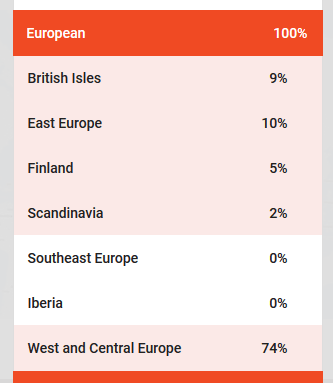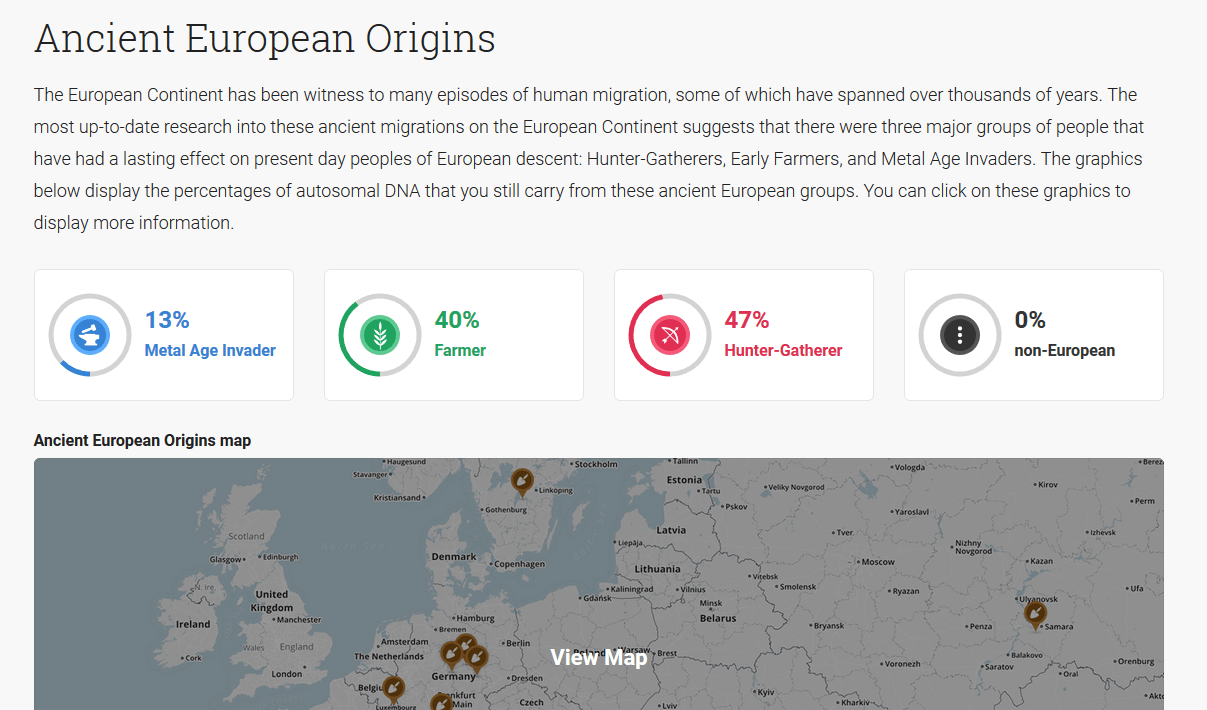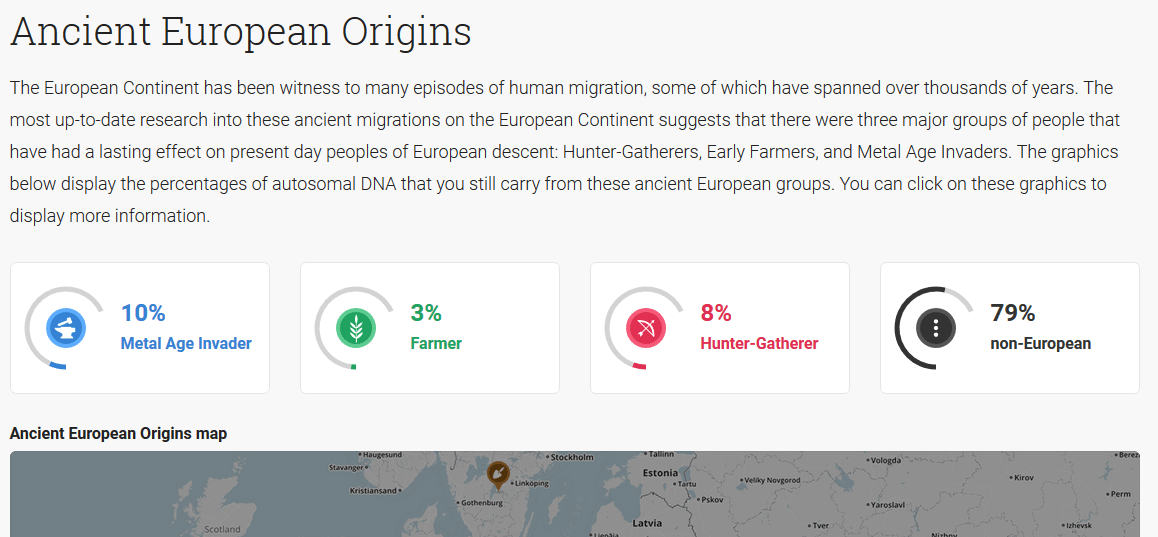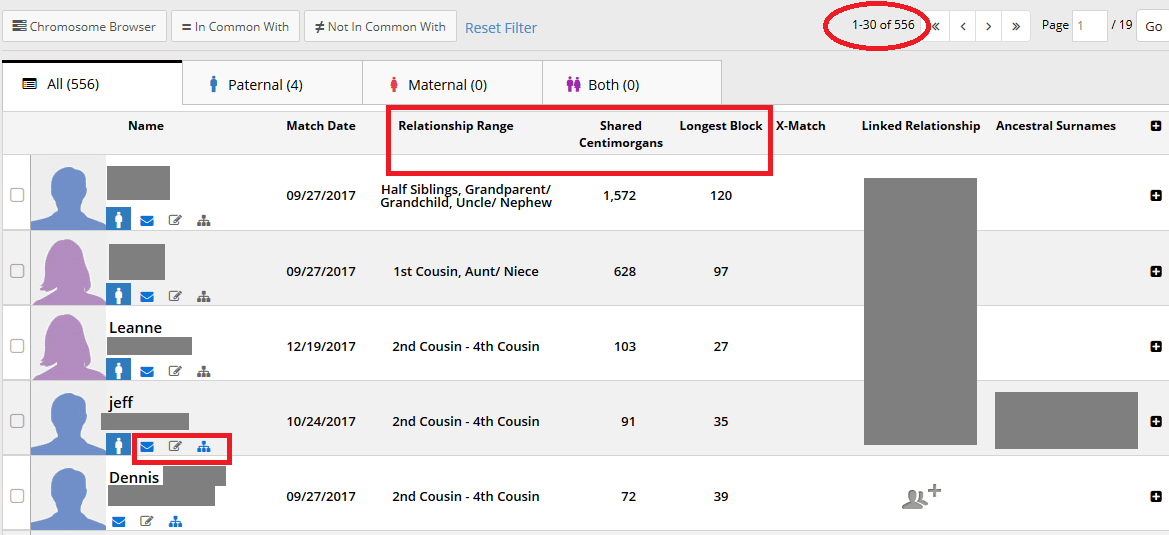Are you interested doing the Family Finder test with Family Tree DNA? In this post, I will show you an example of Family Tree DNA Family Finder results. I'll walk you through the different aspects of the results and explain what type of information you can expect to learn.
Doing the Family Finder test with Family Tree DNA is a great way to learn about your family's ethnicity over the past 300-500 years, view the migration patterns your ancient ancestors traveled, and find living DNA relatives. Whether you are considering a test to satisfy your curiosity, or if you are a serious genealogist wanting to take your family research to the next level, I feel pretty confident that you will be happy with your results.
The following example that I will show you belong to a family member who received his results in September of this past year. He decided to do this test in order to help me with my research. Some DNA doesn't get passed down each generation, so by testing additional family members, I've been able to learn information that I would not have been able to discover using only my own DNA.
When you first get your results, what will you see on your Family Finder page?
When you first log in to your Family Finder results, you will see a dashboard that looks similar to the image below. You can then click on the individual tabs to see the different sections of your results.

What to expect from your myOrigins ethnicity estimate from Family Tree DNA?
One of the most popular reasons to do a genealogical DNA test is to explore your ethnicity report and see where your family really came from. Everyone has a desire to know their roots, and your ethnicity estimate will help you better understand your ancestry. It should be noted that an ethnicity estimate is only an estimate, and the technology is still improving. Even so, it is a very insightful glimpse into where the DNA that you have inherited came from.
The following image is a screenshot of an actual ethnicity estimate (myOrigins) from FTDNA. What will yours show?

We don't share DNA with every single one of our ancestors, but we did inherit DNA from many of them. Family Tree DNA is able to compare the DNA that you did inherit from your ancestors to reference populations around the world in order to determine your ethnicity. It's pretty neat!
What is the ancientOrigins on Family Tree DNA?
If you are curious about where your family came from many thousands of years ago, you are in luck! Family Tree DNA can tell you the approximate percentage of DNA that you share with many very ancient populations, focusing primarily on Europe. If you have ancestry that is not European, then you will receive a percentage that is "non-Europe" and then the corresponding European categories. As more scientific data becomes available, they will add non-European categories.
Below is an example of the ancientOrigins from someone who has no non-European ancestry:

Below is an example of what someone with primarily non-European ancestry might expect to see on their ancientOrigins results:

The ancientOrigins information is not very useful from a genealogical perspective, but I find it interesting on an intellectual level. Additionally, if you have no information whatsoever about your ancestry, it might fill in some basic information about your ancestry.
Example of Family Finder DNA match list on Family Tree DNA
If you are interested in looking at your DNA matches, you can just click on the "Matches" tab from the dashboard. You will then be taken to a page where you will see a long list of DNA matches. The names at the top of the list are the closest matches to you, and as you go down the list, they become more distant. Since the site can only display relatives of yours who have also taken a DNA test with FTDNA, there is no way to know who will be on your list - or how many DNA matches you will have - until you get your results back.
Below, you can see my relative's DNA match list (with confidential information grayed out for privacy):

In the image above, I highlighted a few interested areas of the DNA match list that I think give you a good idea of what information is available on your DNA match list:
- The top circle tells you how many DNA matches you have on the site. The person who took this test has 556 DNA matches on Family Tree DNA, which is many more than he actually needs to explore his family tree. Many of you will have a much higher number of DNA matches. The relative who took this test is the grandchild of children of immigrants to the US, meaning that many of his DNA relatives live in other countries and don't have access to DNA testing, or are not included in this database. As a comparison, I have over 2100 matches on the site, since presumably more of my DNA relatives have done this test.
- The middle red rectangle shows you the estimate relationship range and the total amount of shared DNA. This information will help you figure out how your DNA match is related to you.
- The small red rectangle shows you where you can find the contact information for your match, as well as a family tree, if they have one built on the site.
Are you ready to get your Family Finder test?
It can take about 4-6 weeks for your Family Finder test results to come back. If you are ready to go ahead and get started with your DNA adventure today, if you order using the link below, I get a small commission (at no extra cost to you, of course!):
Order your Family Finder test today! Discover The Story Of Your DNA with Family Tree DNA
I would never recommend a product that I don't love and use myself. I thank you for your support, since it helps me keep this website going.
Conclusion
I hope that you learned a little bit about what you can expect from the Family Tree DNA Family Finder test. If you have any questions about something that I wrote, or would like to share a comment about your DNA testing experience, I would love to hear from you below.
Thanks for stopping by!


Deborah Hawkins (nee )Hoover
Thursday 20th of January 2022
I'm more interested in finding out the name of my Paternal Grandmother who died after my father was born. She was born in Ireland, and my father was born in Washington D.C. (U.S.A.) in 1919 How might I find out her name and background, and more importantly, will this test (for $79.) family DNA, give me that answer?